Today I played in the surf near Bakkum at the Dutch coast. We were there with club-members of the KVU and two guests: Axel and Hans.
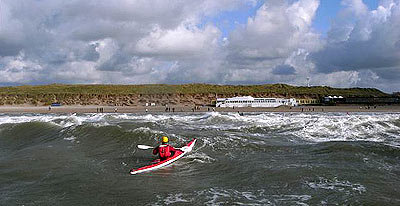
During the day the westerly wind increased to 6 Bft, offering good conditions with waves up to 1,5 meter for kayaking in surf. The only drawback was that the tide was going down at the time that the wind was OK. The low tide produces, in combination with the wind, steep and powerful dumping waves which made it a challenge to break through them in order to reach surf-able waves.
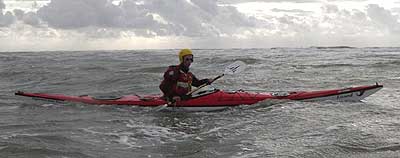
I thought that it was about time to paddle the Cetus in surf. Today I could use Leo's. Thx Leo.
And again I was impressed with the stability of the kayak in the confused, hissing sea.
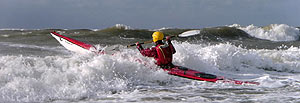
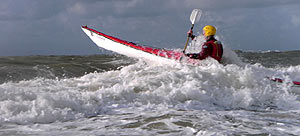
My paddle friends all used short manoeuvrable WW-kayaks, except Axel who brought his surf-shoe-kayak. Normally a seakayak is superior to the short kayaks where it concerns breaking through cresting waves with a kayak. I was surprised however that in the conditions of today the Cetus had definitely no advantage in this. On the contrary, some WW-kayaks could break easier through waves. Whether it was the 5,5 meter length of the Cetus or the high volume of the front-ship I don't know, but the Cetus rose to steep angles when I "climbed" a wave. Probably it was this angle being responsible for the waves pushing the Cetus backwards on every passage.
Looking at the slender bow and the speed of the Cetus I expected the opposite.
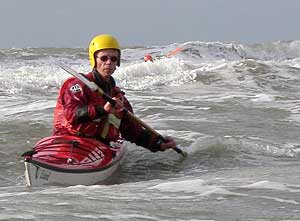
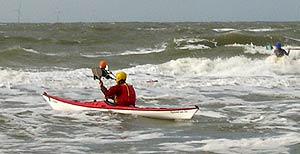
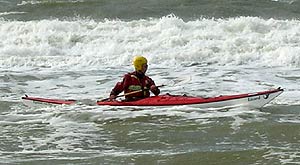
That the Cetus did not surf easy wasn't a surprise to me after the last trip on the Hoornse Hop. When catching a wave the Cetus broaches quickly and that was also what I expected. But it goes further than that because she turns very quickly further until she completed a 180 -turn letting me face the wave again. Normally when something like that happens the power of the wave is decreased already but because the Cetus turns so quickly it happened that, once turned, the wave steeped further with me backwards on its face and let me flip backwards.
It could be an option to drop the skeg to improve on this broaching behaviour, but because the forces in surf are high I didn't dare to drop the skeg, being afraid the skeg would break.
Of course today's waves were steep and powerful but I expect this quick-turn habit also to happen in smaller waves only without the backward-flip in that case.
Honestly I did not like the flip because I hit the sand bottom very hard. Knowing that boats can split because of this, I feared the worst for Leo's kayak. However the Cetus was well built and did not show any sign of deterioration.
By the way, the flip was a natural occasion to test rolling in the Cetus. Apart from the washing-machine underwater, rolling was no problem and I was upright at the first attempt, still being on the front of the same wave, which was being scaled down a bit in the meantime.
After that I did a series of high braces and rolls. Rolling was OK but felt, as it did also after the capsize, a bit laborious. It could well be that this observation was caused by being a bit tired. So later I will do some more rolling in quiet water to compare.
